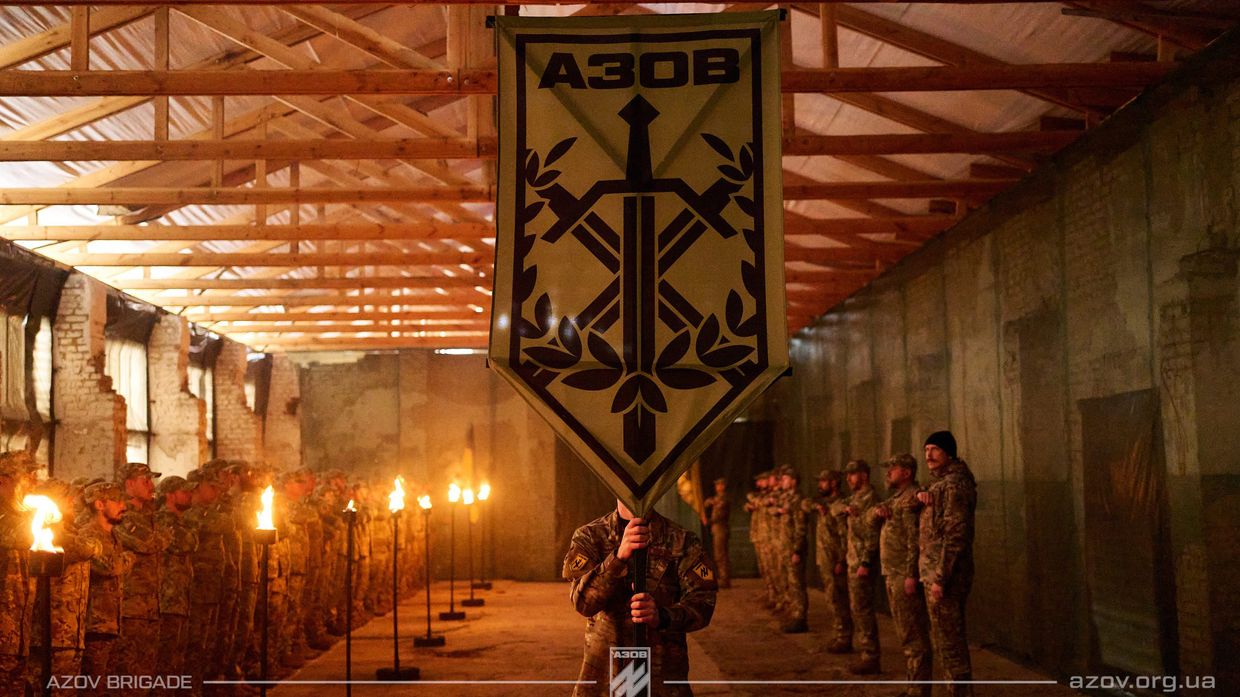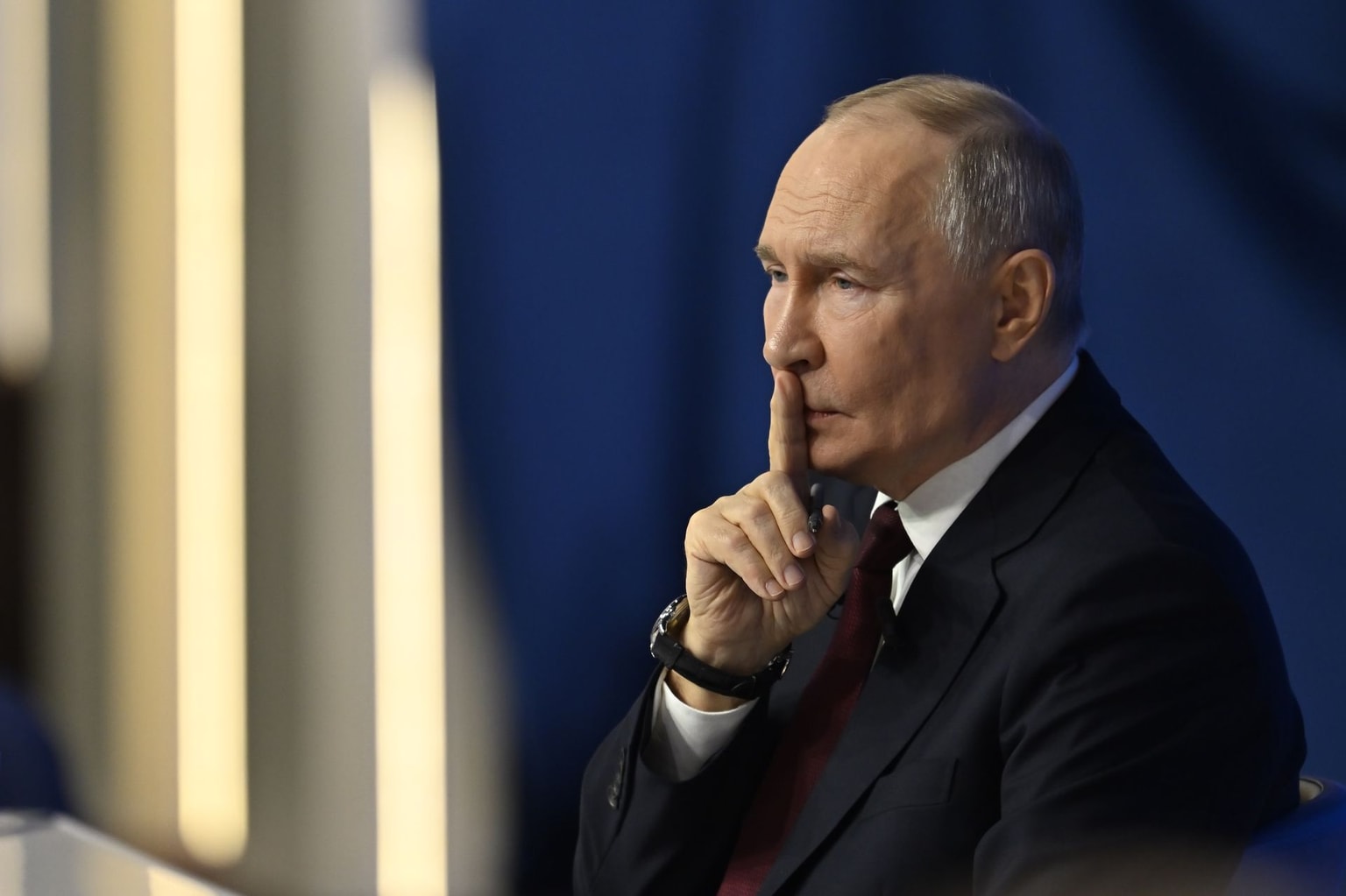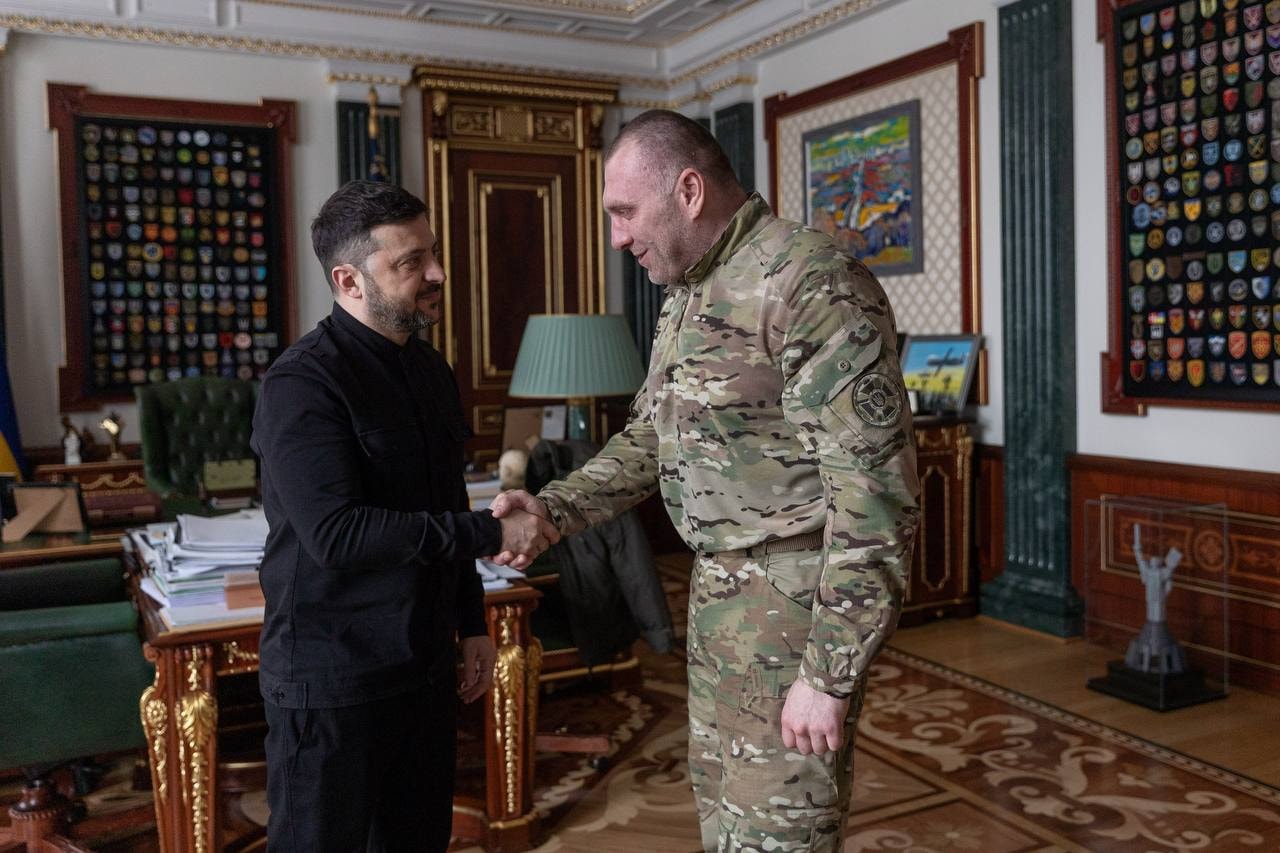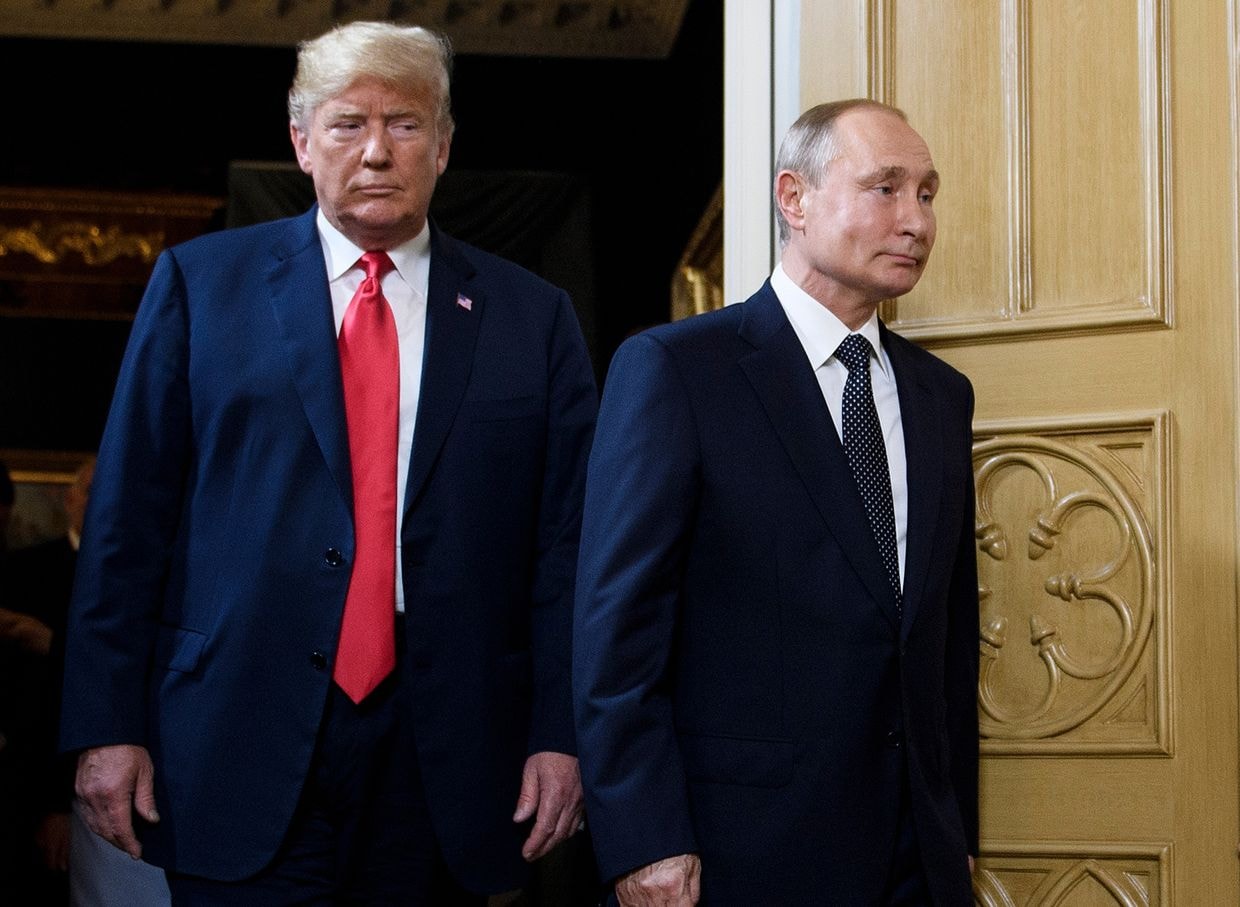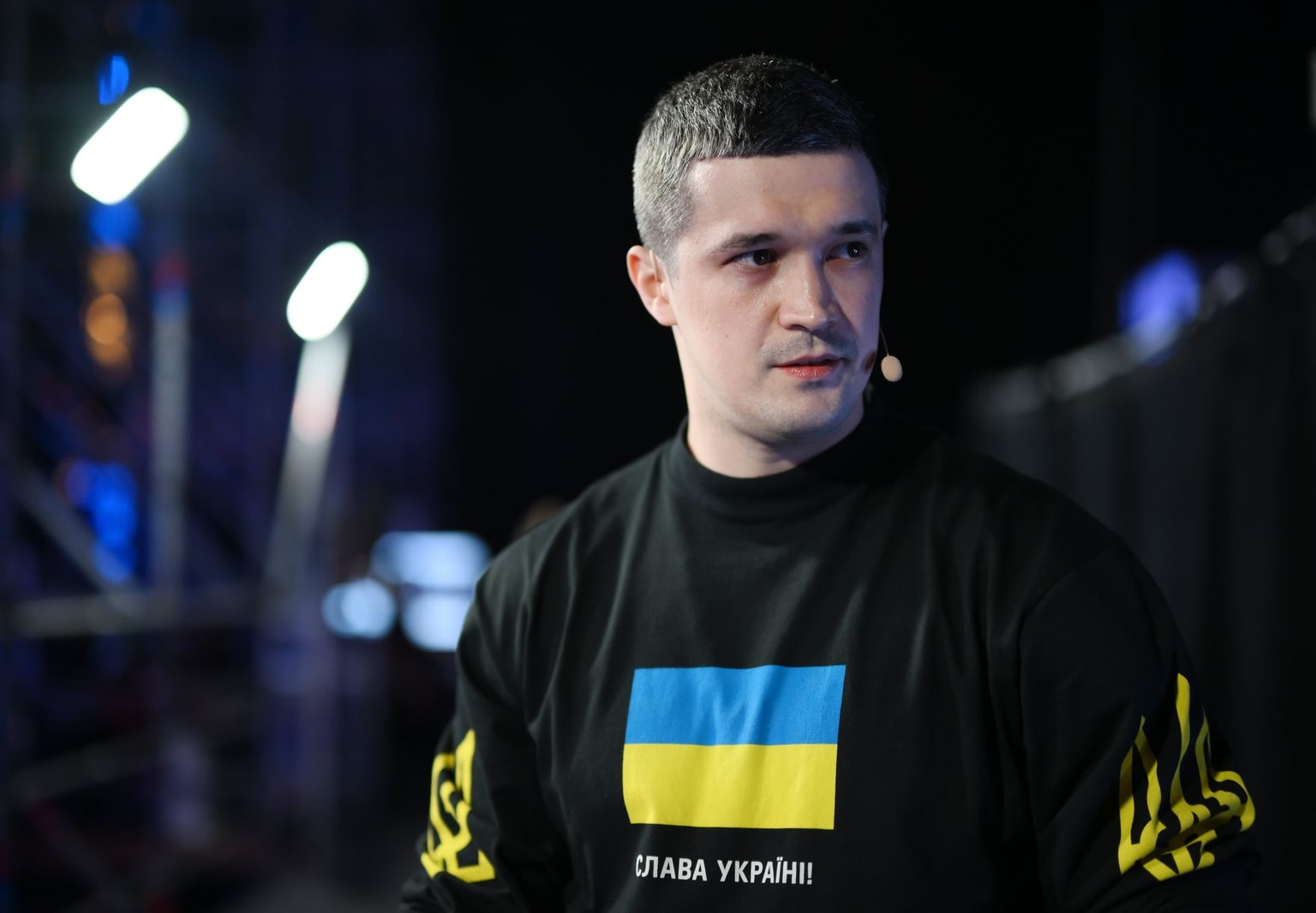
Azov is where you can learn to defend your homeland from Russia
Soldiers of Ukraine's Azov Brigade walk in a trench in Serebrianskyi Forest in Luhansk Oblast, Ukraine, on Oct. 12, 2023. (Elizabeth Servatynska / Azov Media / Getty Images)

Yurii Chekh
Commander of the Azov International Battalion
While a nation-state prioritizes the well-being of its citizens, an imperial state is always seeking to expand. From the days of the Tsars through the Soviet era and even after its collapse, Russia's neighbors have understood that any country bordering Russia could be its next target. And it's the peoples already under its control who end up carrying out this expansion.
Ukraine has long been a victim of such ambitions from states with different names but the same capital — Moscow. And whenever Moscow managed to subjugate Ukraine or parts of it, it quickly began using people from those occupied regions to fuel further aggression.
In the 1920s, after breaking the Ukrainian population through famine and crushing repeated uprisings, the Soviet regime sent the poorly equipped 44th Kyiv Rifle Division to fight in Finland in 1940. This division was decimated, with around 9,000 soldiers killed. In total, roughly 40,000 Ukrainians died in that war, and over 1,300 were captured — forced to fight for the very aggressor that had oppressed them.
This is what Russia offers the peoples it colonizes — to die pushing the Iron Curtain a few more inches west.
In 2022, the Russian command sent thousands of poorly equipped Ukrainians from the occupied territories to fight against their own people. Thousands died in and around the city of Mariupol, and the brutal tactics of that time gave the world a chilling new term: "meat grinder assaults." This is what Russia offers the peoples it colonizes — to die pushing the Iron Curtain a few more inches west.
That's why Ukrainian volunteers have so often joined, either on their own or in entire units, the forces standing up to Russian expansion. They knew that if Russia conquered another country, its people would one day be used in a new campaign against Kyiv. During the Soviet-Finnish war, Ukrainian nationalists supported Suomi – a unit led by Yurii Horodianyn-Lisovskyi, a well-known veteran of the Army of the Ukrainian People's Republic – joining the fight against Soviet invaders. Finland also had the support of volunteers from the United States, Norway, Sweden, Denmark, and other nations.
Later, volunteers of Ukrainian descent fought against the USSR and the communist regimes it propped up. Ukrainian-American officer Samuel Jaskilka led the first wave of the landing on Red Beach at Incheon on Sept. 15, 1950 — a bold move that helped turn the tide of the Korean War, where the USSR was backing communist North Korea. Hundreds of Ukrainians fought the communists in Vietnam as part of American forces, including Major Myron Diduryk, who earned the nickname "Mad Cossack" from his fellow soldiers for his fearlessness. Many of these men were immigrants or the children of immigrants, forced to leave their homeland by the USSR government.
Even in the years of independent Ukraine, Ukrainian volunteers repeatedly joined the fight against Moscow's colonial aggression. For example, approximately 300 Ukrainian volunteers fought on the side of the Chechen Republic of Ichkeria during the First Russo-Chechen War. Two of them — UNA-UNSO members Oleg Chelnov and Oleksandr Muzychko — were awarded Ichkeria's highest honor, the "Hero of the Nation." Many other Ukrainians received additional state awards from Ichkeria.


During the 2008 Russo-Georgian War, Ukraine's support for Georgia went beyond volunteer involvement. Ukraine also provided Georgia with air defense systems that helped shoot down 12 Russian bombers. On Aug. 12, 2008, Ukrainian President Viktor Yushchenko, alongside other European leaders, arrived in Tbilisi and took part in a rally in the city's central square to show political support for Georgia and prevent the victim from being left isolated in the face of aggression.
Since 2014, and especially since 2022, Ukraine has become a place where true opposition figures from the nations subjugated by Russia could come together. Chechens, Russians, and Belarusians formed their own national units or joined other volunteer formations. By 2023, Russian citizens — volunteers serving in the defense forces of Ukraine — had crossed into Russian territory to launch a new phase of armed resistance against the Kremlin's regime.
Today, foreigners can officially join Ukraine's defense forces to help liberate their own lands from Russian occupation, or to stop Russia from attacking their countries when it decides to do so.
That day will certainly come. The proof lies not only in the aggressive, colonial rhetoric of Russian officials. It's also in the recent violation of Estonian airspace by a Russian Su-35 fighter jet. It's in the repeated breaches of Polish, Romanian, and other countries' airspace by Russian strike drones and cruise missiles. It's in the growing concentration of Russian troops and military equipment along the border with Finland.

Russia is already preparing to strike at several countries, but holds back only because it cannot yet fight on multiple fronts at once. If Russia were to defeat and occupy Ukraine, it would soon turn its sights on Europe, forcibly mobilizing Ukrainians just as it did during the Soviet-Finnish war. And if that happens, it will be those who fought in international units alongside Ukraine and gained experience against the Russian military who will be ready to lead the defense on their own borders.
Today, the International Battalion of the Azov Brigade is the best place for foreign citizens to gain firsthand experience and learn the rules of modern warfare. Its seasoned commanders have been fighting Russia for more than a decade. Its instructors bring expertise from battles across diverse types of terrain. Its ranks include reliable fighters from many countries, all sharing their knowledge and gaining new skills together. We constantly learn from each other, exchange best practices, and become more effective and prepared for the challenges that lie ahead.

